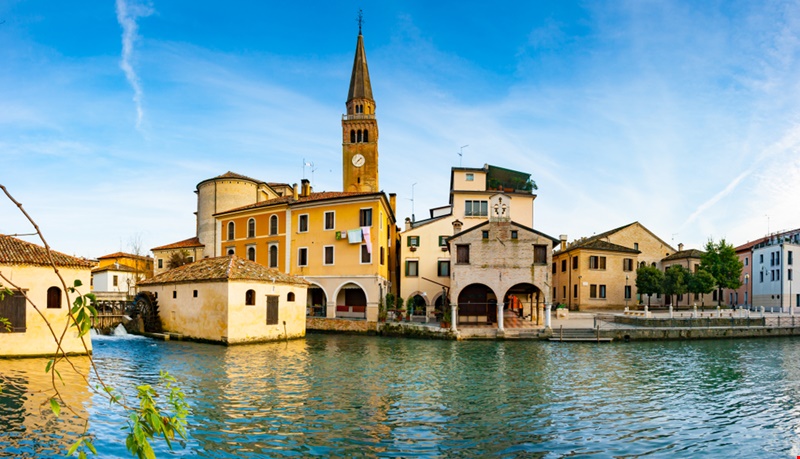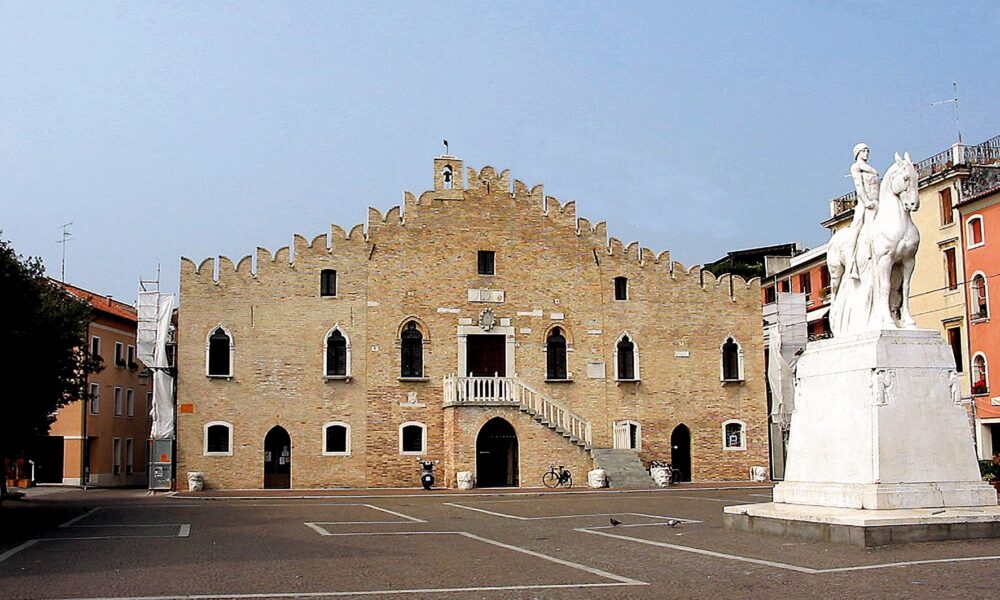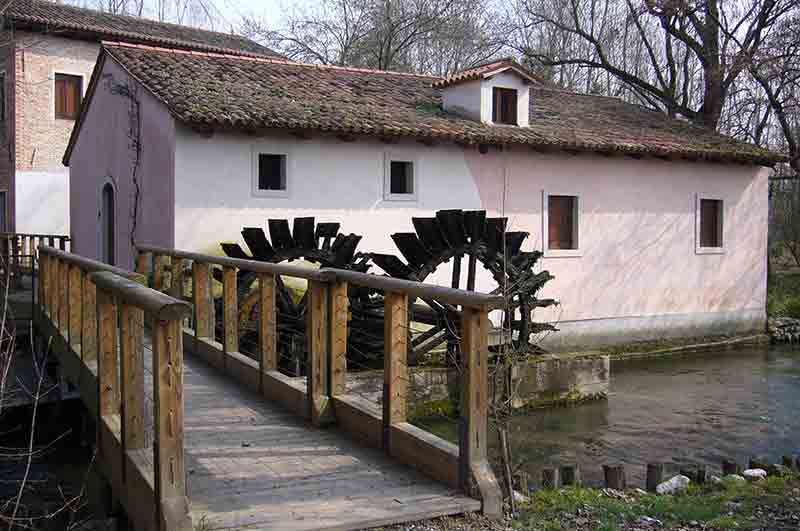
Portogruaro is a small municipality in the eastern part of the Veneto region, located not far from the border with Friuli Venezia Giulia. Its history begins in the Middle Ages but it is with the Venetian domination that the town becomes a thriving commercial centre, assuming the noble aspect that still shows through for those who visit it today.
A day trip to Portogruaro from Lignano Sabbiadoro offers moments of leisure, for example shopping in the town centre, but cultural ones too, visiting museums, churches and admiring historical monuments.
How to reach Portogruaro from Lignano Sabbiadoro
By car

Take the SR (Regional Road) 354 towards Latisana, before reaching Paludo, turn left onto Via Mauro and follow the road that runs along the Tagliamento River embankment up as far as the the traffic lights. Turn left onto the SS (State Road) 14 and follow it towards Portogruaro. Take the junction that indicates the direction for Udine and - at the intersection - turn left onto the SP (Provincial Road) 463 which will bring you close to the town’s historic centre.
Journey time: 30 minutes
9 things to see and do in Portogruaro
1. The access towers to the city
The ancient medieval centre of Portogruaro was once surrounded by walls and a moat (which is still visible in some places). Back then the entrances to the town were via five defensive gates that still identify the urban boroughs today: the Torre San Gottardo, the Torre San Giovanni, the Torre Sant’Agnese, the Torre S. Nicolò and a final tower that led to Summaga. It is certainly from here that your visit to the city of Portogruaro should begin!
You will find that of the original five towers only the first three survive. The Sant’Agnese tower is the only one that can be visited as the City Museum is set up inside and can be visited free of charge daily (except Monday) from 09.00 to 12.00 (Saturday and Sunday from 09.00 to 13.00).
2. The Cathedral of Sant'Andrea and the leaning bell tower
The Cathedral of Portogruaro, dedicated to the town patron Sant'Andrea, is a church with three naves dating back to the late 19th century. Inside there are interesting art works such as the “Sacra Conversazione” and the “Storie of S.Andrea” by Pomponio Amalteo and the “Pala di S.Rocco” and “Pala della Resurrezione” by Jacopo Negretti.
The “Pala di S.Tomaso” by Cima da Conegliano should also be mentioned. This painting was: originally exhibited in the Cathedral but now only a copy is on show as the original is exhibited at the British Museum in London.
Portogruaro’s leaning bell tower, 59 metres high, that characterises the town’s skyline in a unique fashion is unmistakable but not open to the public.

3. The town hall with battlements
On the Piazza della Repubblica, the town’s most important open space, stands the unique town hall characterised by its Ghibelline battlements. The palace was erected in two phases. In the first phase the central building was erected, with the side wings being added subsequently.
Today the building is used as the town hall, with administration offices and reception rooms, such as the Sala delle Colonne on the ground floor, and the Council Chamber on the first floor. Inside there are some important paintings by Luigi Russolo, a famous futurist artist from Portogruaro.

4.The Molini (mills) and Oratory of the Madonna della Pescheria
One of the most evocative places in Portogruaro is certainly the area housing the ancient mills that rise on the Lemene River and which today host the Ai Molini Municipal Gallery of Contemporary Art which hosts temporary art exhibitions with free admission.
Not far away, again overlooking the Lemene river, is the ancient Oratory of the Madonna della Pescheria, a structure dating back to the 17th century and dedicated to the Madonna, protector of fishermen (the first nucleus of inhabitants of the town) and where a religious event takes place each year on 15th August.

5. The Concordiese Archaeological Museum
The Concordiese Archaeological Museum is located in Portogruaro but its existence is the manifestation of the strong bond that unites it with the nearby town of Concordia Sagittaria.
Its rooms, inaugurated in 1888, hold archaeological finds from the Roman era found in the nearby town which was an important Roman colony. The structure of the Museum mirrors the shape of a Christian basilica with three naves evoking the early Christianity of Concordia. Inside you can see statues, mosaics, funerary steles, epigraphic material and objects from everyday life.
6. The Thursday market
Every Thursday the historic centre of Portogruaro swarms with stalls and sellers of food, clothing and accessories. This is the traditional weekly market where the city’s inhabitants and the surrounding area meet as well as tourists who flock in from the neighbouring beaches to the city streets to combine a little shopping with a cultural visit to the beautiful town of Portogruaro
7. Around Portogruaro: visiting the Summaga Basilica
Just a few kilometres from Portogruaro is the small town of Summaga. The Abbey that stands in this small hamlet dates back to the 10th -11th centuries. Originally flanked by a monastery, today only the body of the three naved church remains, with its three apses and the bell tower.
During a day visit to Portogruaro it is worth passing through Summaga to see the Abbey and the original frescoes which have been restored in recent years.
8. In the surroundings of Portogruaro: Concordia Sagittaria
Close to Portogruaro and reachable via a short walk of a couple of kilometres on a pleasant cycle path that runs along the Lemene river, Concordia Sagittaria is a centre of great historical and archaeological value.
A very important city of the Roman Empire, it is still possible to admire this legacy by walking among its houses that includes the ancient Basilica and its archaeological area, the remains of the thermal baths, the theatre and a Roman villa.
A point of interest not to be missed!

9. In the surroundings of Portogruaro: the mills of Boldara and Stalis
For those looking for a diversion amidst Nature, a few kilometres from Portogruaro, following the course of the rivers that run through it, the visitor can reach the mills of Stalis and Boldara, two ancient mills for grinding cereals that have now lost their function but remain a picturesque testimony of a not-so-distant peasant past.
The mills are easily reached along the cycle paths that go to make up the “GiraLemene”.
